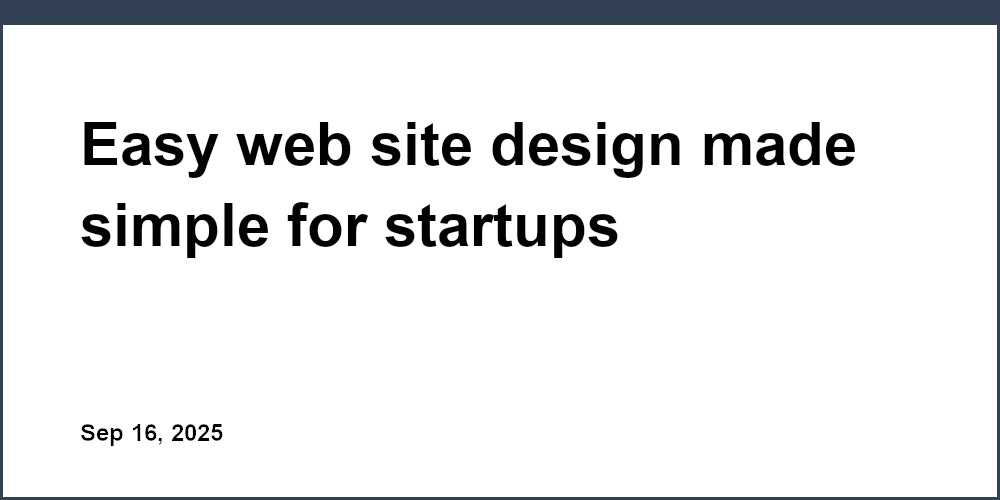You did the smart thing and hired professionals to build your site from scratch. Now, you run a sleek, custom-built website with a top-notch design, a user experience that is as smooth as butter, and everything looking great on the front end.
But actually, it's not all sunshine and rainbows. Behind the scenes, trouble is brewing. Your Warehouse Management System (WMS) and your website aren’t exactly on speaking terms. Awkward...
So, how do you get these two systems to play nice? Well, lucky for you, connecting your WMS to your custom-built website doesn’t have to be a headache, and doing it right can unlock some pretty incredible benefits, like better inventory control, happier customers, and even a smoother workflow for your team.
Let’s walk through the best practices for getting your WMS and website on the same page (was that a pun?).

1. Understand Your Systems First
Before diving headfirst into the technical stuff, take a moment to know what you’re dealing with. What kind of WMS software are you using? Are there any out-of-the-box solutions that already come with built-in website integration, or are you working with something a little more old-school that needs a custom API?
Ask yourself these questions:
- What does your WMS currently handle? (Inventory, order processing, fulfillment, etc.)
- What’s missing on the website that your WMS could automate or improve? (Real-time inventory updates, shipping details, stock levels for customers, etc.)
You want to have a solid grasp on what both systems are doing now and what you want them to be doing in the future.
2. Choose the Right Integration Method
There are a few ways to integrate your WMS with your custom website, and not all methods are created equal. Let’s break down your main options:
APIs (Application Programming Interfaces)
APIs allow your website and WMS to communicate and share data, and they’re typically the go-to for custom-built websites. They’re flexible and scalable and let you control what data flows between systems.
Third-party Plugins or Connectors
Depending on your WMS, there might be pre-built connectors that can hook directly into your website. These can be handy if you don’t want to mess around with coding or custom APIs. But be warned — while third-party plugins can save time, they may also be more limited in terms of customization.
Manual Uploads (When You Have No Other Option)
Let’s say you don’t have an API, and third-party plugins just don’t exist for your particular setup. You might be stuck with manual uploads for things like inventory updates. This is a last-resort solution, and while it’s better than nothing, it’s not exactly efficient or scalable.
In most cases, the API route is going to be your best friend.
3. Sync Data in Real-Time (Or as Close as Possible)
Nobody likes seeing a product listed as "in stock" on a website, placing an order, and then getting an email two days later saying, “Oops, sorry, we’re actually sold out.” It’s the quickest way to lose a customer, and it’s 100% avoidable.
When integrating your WMS with your website, set things up so that inventory levels update in real-time (or as close to real-time as your system allows). This way, your website always reflects what’s actually happening in your warehouse.
Real-time sync isn’t just for inventory, either. You’ll also want it for shipping statuses, order confirmations, and any other piece of data that could impact your customer experience.
4. Customize Based on Business Needs
Since you’ve got a website tailored to your exact needs, you don’t have to settle for cookie-cutter integration. You can tweak things to suit your business perfectly.
Do you have a particular way of organizing your warehouse that could translate into faster picking and packing? Build that into your website’s order processing. Are your customers frequently asking for shipping updates? Set up automated notifications that sync directly from your WMS.
The point is, don’t be afraid to customize the integration so it works for your business. A one-size-fits-all solution might get the job done, but a custom solution will take it to the next level.
5. Test, Test, and Then Test Some More
You’ve probably heard this before, but it’s worth repeating: testing is everything. Once you’ve got your WMS and website linked up, run as many tests as you can.
Check that:
- Inventory updates are showing correctly on the front end;
- Orders placed through the website are correctly reflected in your WMS;
- Shipping details sync without a hitch.
And don’t just test once and call it good. Keep an eye on things for the first few weeks to catch any bugs or hiccups early on. There’s nothing worse than discovering a major integration flaw after dozens of orders have already slipped through the cracks.
6. Keep Security in Mind
When linking systems, especially ones that handle sensitive data like customer information or payment details, security is huge. Make sure any integration between your WMS and website follows best security practices like encrypting data transfers, using secure APIs, and limiting access to authorized users only.
You want your integration to be smooth, but you also want it to be safe. Take the extra time to ensure security isn’t compromised in the process.
7. Work With Experts When Necessary
Finally, don’t be afraid to call in the pros. If you’re not 100% sure how to link your WMS to your website, or if things get complicated with custom APIs, it’s worth hiring an expert who’s been down this road before.
The right help can be the difference between a clunky, buggy integration and one that just works from day one.
Wrapping Up
Linking your WMS to your custom-built website isn’t just about making your life easier (although it totally will). It’s also about creating a seamless experience for your customers and optimizing the backend of your business so things run like clockwork.
Trust me, follow these best practices, and ensure that your WMS and website work together in harmony. When that happens, everyone wins.

